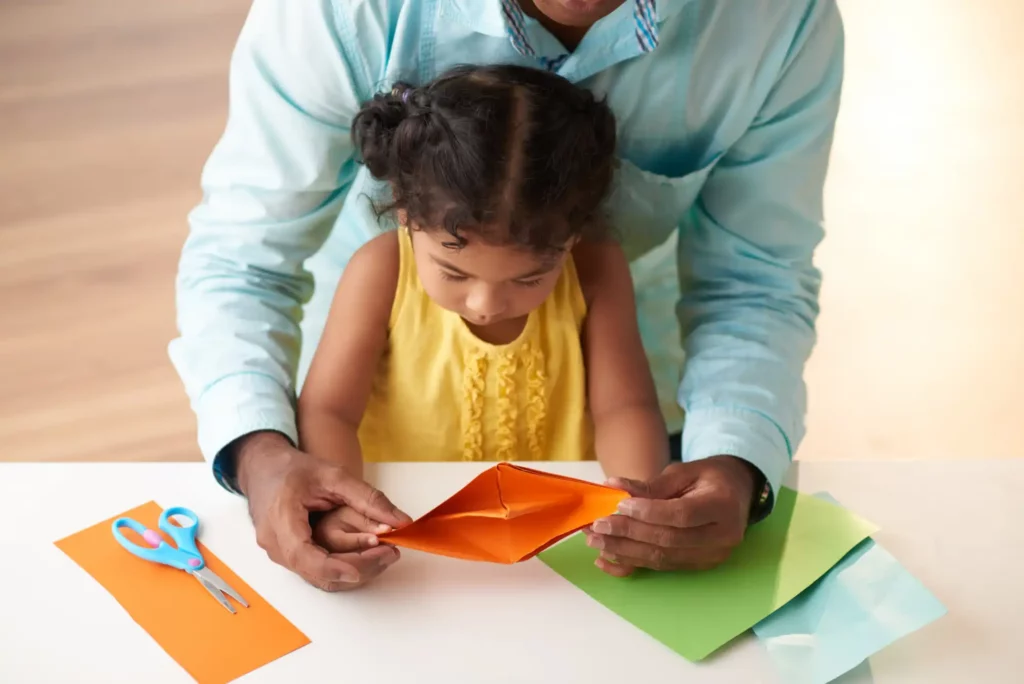
Written by
Meghna Elizabath Zachariah
M.Sc., B.Ed in Special Education
Special Education Department
Children’s learning disabilities are a frequent issue that many parents deal with. Both children and parents may find it difficult and frustrating. Reading, writing, numeracy, and effective communication skills in children can all be impacted by learning disabilities. It’s essential for parents to give their children the assistance they need to realize their full potential.
The first thought associated with the term learning disability is problems in learning. But do these children face problems only in learning? Do these children have difficulties in other areas? How can we help them? We’ll talk about ways to support your child both academically and outside of the classroom in this blog.
Understanding Learning Disabilities in Children
Learning disability is a processing disorder. It affects the way language is processed. It manifests as difficulty in reading, writing, spelling and difficulty in arithmetic skills. Children with learning disabilities have average to above-average IQ. The issues in learning are not caused by poor exposure to learning, visual impairment, hearing impairment or emotional disturbances. The issues in learning are caused by certain differences in the brain.
Suggested Reading: Multisensory Learning Enhances Reading Skills
There are three types of learning disabilities. It includes dyslexia, dysgraphia and dyscalculia.
Dyslexia
This type of learning disability refers to difficulties in reading and spelling. Children with dyslexia struggle with letter-sound association, mixing up letters (eg: b and d, p and q). They tend to omit words, substitute words or add words while reading a passage. This affects fluency and comprehension of what is read.
Suggested Reading: Multisensory Learning For Dyslexia
Dysgraphia
This type of learning disability refers to difficulties in writing. Children with dysgraphia have significant problems with letter formation, spacing and alignment. Their writing might be laborious. They might complain of their hands hurting while writing and might avoid writing. Some children might find it difficult to organize their thoughts on paper.
Dyscalculia
Children with difficulties in arithmetic come under this category. Children with dyscalculia have issues with identifying patterns, meaningful counting, understanding place value, basic computation and so on.
Few Signs and Symptoms during Early years
It is important to identify learning disabilities during early years. Parents must watch out for signs that may indicate children at risk of having learning disabilities.
- Delay in speech milestones
- Lack of interest in rhymes
- Difficulty in learning letter names
- Difficulty in associating letters to their sounds
- Difficulty in memorizing number sequence
- Difficulty in counting
- Issues with coordination
- Left and right confusion
- Confusion between letters and numbers (e.g. b and d, u and n, 6 and 9)
How to help children with Learning Disability
Children with learning disabilities not only have issues in learning but also face difficulties in other areas. They need to be provided support in all areas.
Academic Support
- Obtain a Diagnosis: Obtaining a diagnosis is the first step. An assessment can be carried out by a qualified professional (RCI recognized Clinical Psychologist) to help in diagnosis. You can comprehend your child’s learning disabilities and locate the best options to support them if you receive an accurate diagnosis. Children with learning disabilities are diagnosed only after 8 years old. However, children under the age of 8 having problems in learning can be seen as students at risk of having learning disability. Children up to the age of 8 are still learning and may show errors. These students can be identified and necessary support can be provided. If difficulties persist after 8, children will be diagnosed with learning disability after a period of intervention for 6 months.
- Individualized Education Plan (IEP): After receiving a diagnosis, collaborate with your child’s school to develop an IEP. (IEP). Your child’s learning objectives and the accommodations they need to achieve in school are laid out in an IEP, which is a legally binding agreement.
- One-on-one support: If your child is having a learning disability, take into account hiring a special educator who can offer individualized assistance. Support will be tailor-made based on the child’s strengths and needs.
- Multi-sensory teaching : Incorporate various activities that stimulate different senses of the child. For example, teaching a child to write a letter by showing it and turning it into a picture and saying it (visual, auditory), drawing the letter on the floor and making the child walk over it (kinesthetic), making the child write the letter using fingers in sand or foam(tactile). Provide visual, auditory, kinesthetic and tactile activities to make learning easier and fun.
- Assistive Technology: If your child has a learning problem, assistive technology may be able to help. For instance, speech-to-text software can assist your child in writing homework, while text-to-speech software can read textbooks aloud, and electronic math worksheets can support math skills.
Non-Academic Support
- Promote Physical Activity: Physical activity can help your child feel less stressed, happier, and more well-rounded. Encourage your child to engage in any physical activity they find enjoyable, including sports, dance, and others.
- Support of occupational therapy: Some students with learning disabilities may have issues in coordination, visual perception, fine motor skills. Occupational therapy can help children in developing the same.
- Develop Social Skills: Social skills can be challenging for kids with learning difficulties. They might find it challenging to initiate or maintain relationships with peers or family. It could be because of poor confidence or difficulty in understanding what others are saying owing to their language processing disorder. Encourage your child to join clubs and group activities so they can improve their social skills and make friends.
- Offer emotional support: Kids with learning difficulties sometimes experience sadness, rage, or frustration due to repeated failure in academics. They develop a sense of helplessness and constantly expect failure. Children should be encouraged. Listen to their worries and give them emotional support. Avoid comparing children or saying you expected more from your child.
- Honor Success: Honor your child’s accomplishments, no matter how minor they may seem. Focus on and support the child to develop their strengths. This will keep them motivated and will help them feel better about themselves.
Conclusion
Learning disability can be challenging. However, with early identification, LD treatment and appropriate support children can reach their full potential. To ensure your child’s success, early identification followed by both academic and non-academic support is imperative. You can aid your child academically by acquiring a diagnosis and providing the necessary support. You can encourage your child outside of the classroom by encouraging physical activity, fostering social skills, offering emotional support, and acknowledging accomplishments. Keep in mind that you are your child’s strongest supporter as a parent, and that with your assistance, your child can reach their full potential.



